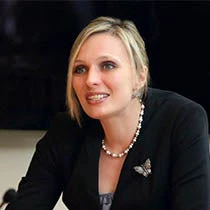 Healthcare official checking temperature.
Healthcare official checking temperature.
As the months of the COVID-19 era tick by, countries continue to have vastly different pandemic trajectories. Some that were relatively successful early on experienced spikes later; others that suffered through a punishing first wave eventually improved outcomes, yet others have seesawed back and forth, and so on.
No single factor can explain the wide range of outcomes to date, but emerging evidence suggests that it is important to have a proactive government response that enlists the cooperation of multiple stakeholders—from households to businesses to non-government institutions. Many of the crucial steps communities can take are fairly low tech and low cost, such as spatial distancing, wearing masks in public, and moving activities and services outdoors. But for these kinds of measures to work, the public as a whole must be on board.
Since we first wrote, governments have shifted toward trying to normalize social and economic life, but the number of countries where infection rates are rising is growing again. Crisis fatigue may now make it even more difficult for governments to create or maintain a cohesive national approach.
The World Bank has assembled a set of informational and analytical resources on governance topics as countries attempt to create “best fit” responses to the pandemic. Included in this repository is a paper on “Coming Together While Staying Apart: Facilitating Collective Action through Trust and Social Connection in the Age of COVID-19”. It discusses the role that trust in government institutions and actors plays in enabling a coordinated, society-wide approach, and offers concrete policy options for building trust throughout the phases of the pandemic.
The paper suggests the following key themes to guide the design of policies to promote trust and a sense of common purpose to combat COVID-19:
- Transparency: sharing transmission rates and fiscal data, as well as policies and decision-making processes in the response.
- Strategic Communications: creating a common understanding about the pandemic and the actions the government is taking.
- Engagement: facilitating a dialogue with stakeholders about their needs and concerns and involving them in creating and implementing solutions; listening to local communities.
- Incentives: a balance of “carrots and sticks” to encourage cooperation (such as grants to businesses, to keep workers on the payroll while following spatial distancing guidelines).
- Coordination across government agencies and among community-based efforts.
- Responsiveness and Accountability: increasing trust by responding to problems, ensuring equal access to services and exercising extreme vigilance to prevent funds from being siphoned off by corrupt actors.
GovTech can play a key role in policies and programs that strengthen trust - for example, in directing people to services such as testing locations and healthcare providers or distributing emergency cash benefits. However, it is rarely a silver bullet. Whether technology plays a useful enabling role depends on non-tech factors such as good policymaking and whether households, businesses, institutions, and other stakeholders are willing to cooperate with one another.
At the onset of a crisis such as COVID-19, there is often a temporary boost in trust, a “rally around the flag” effect as citizens look to government to take charge. This seems to have been the case early in the pandemic, but the windfall of legitimacy may not last long if the government response fails. Yet assuming that underlying policies are sound, the paper proposes that governments (e.g. national, subnational, community) can increase the likelihood of a successful collective response to the crisis if they take concrete steps to build trust in their intentions and problem-solving capacity.
The unprecedented spate of storms, wildfires, and ice melt that has taken place since the pandemic began further underlines the need for societies to strengthen their ability to act collectively to solve problems. It is critical for countries to connect the dots between the simultaneous crises of COVID-19 and climate change, as well as the longstanding structural socioeconomic inequities both crises have highlighted, and to back up their responses with stronger international cooperation and solidarity. This is the moment to rethink business as usual and design new ways to interact with each other and with the natural world.




Join the Conversation